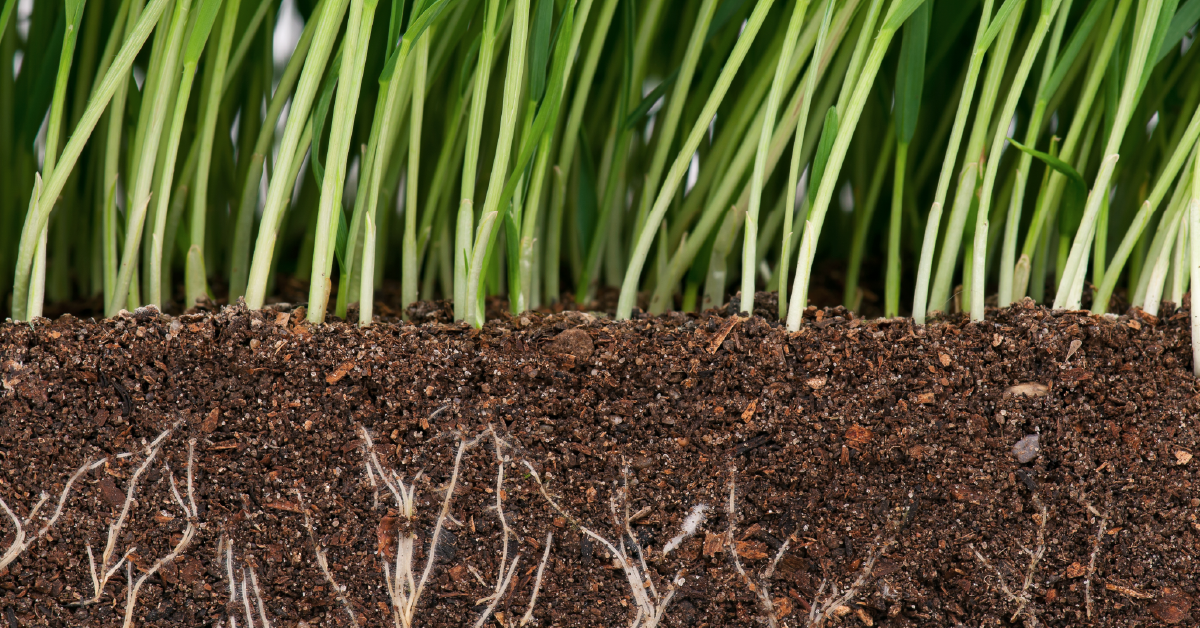Achieving a lush, green lawn all starts by focusing on your lawn’s soil health. If your grass is struggling, we’re here to help you dig a little deeper and target the root of the problem.
Determining your soil health
Healthy soil is essential for a strong lawn. If your grass is turning brown, looking thinner, or growing patchy, then there’s a good chance your lawn is lacking the nutrients it needs. Healthy soil has a greater tolerance towards drought, weather conditions, weeds, and other pests. So, what signs should you look for when determining your soil’s health?
For starters, healthy soil is often darker in color and crumbles off of the roots when you pull up plants or grass. Another good sign is the activity of earthworms, spiders, microorganisms, and other living things under the surface. These critters keep pests and disease down, and help to aerate the soil for better circulation. Other indicators of a healthy lawn include vigorous root development, and well-aerated soil that can retain more water between waterings.
5 ways to improve your soil quality
To grow a healthy, low-maintenance lawn, you need to work from the soil up. Here are a few steps you can take to improve the quality of your soil:
1. Aerate
Foot traffic and machinery can cause your soil to become hard and compacted. Using a hand-held or machine-powered aerator can remove small cores of soil to create passages in the soil to allow water, air, and nutrients to penetrate the soil.
2. Fertilize
Fertilizer supports healthy growth among your grass by spreading the chemicals it needs to thrive, like nitrogen, phosphorus, and potassium. Depending on your lawn grass seed and fertilizer type, you will typically need to fertilize 3-5 times a year.
3. Clear debris and build up
Keeping your lawn clear of thatch, leaves, and debris allows the soil to receive sunlight, air, and nutrients.
4. Seasonal lawn care
Maintaining your lawn is a year-long effort. Be sure to water and mow your lawn according to your grass seed needs depending on if you have warm-season or cool-season grass.
5. Plant high quality grass seed
Planting and reseeding with quality grass seed ensures that your lawn is rooted in a strong foundation. Quality grasses, specifically native grasses, will thrive under your area’s conditions.
The value of healthy soil
Maintaining your soil health now saves you time, money, and effort in caring for your lawn down the road. Improve your soil’s health with our tips to focus on the unique needs of your lawn based on grass seed type, region, and soil type. These efforts will allow less time fertilizing, watering, and controlling weeds and disease in your grass throughout the year.
Our Cultivation Experts have over 65 years in the seed and ag industry, helping homeowners see a visual difference in their lawn. From personal consultations to our expansive selection of grass seed, we’re here to help you achieve a strong, healthy lawn.


